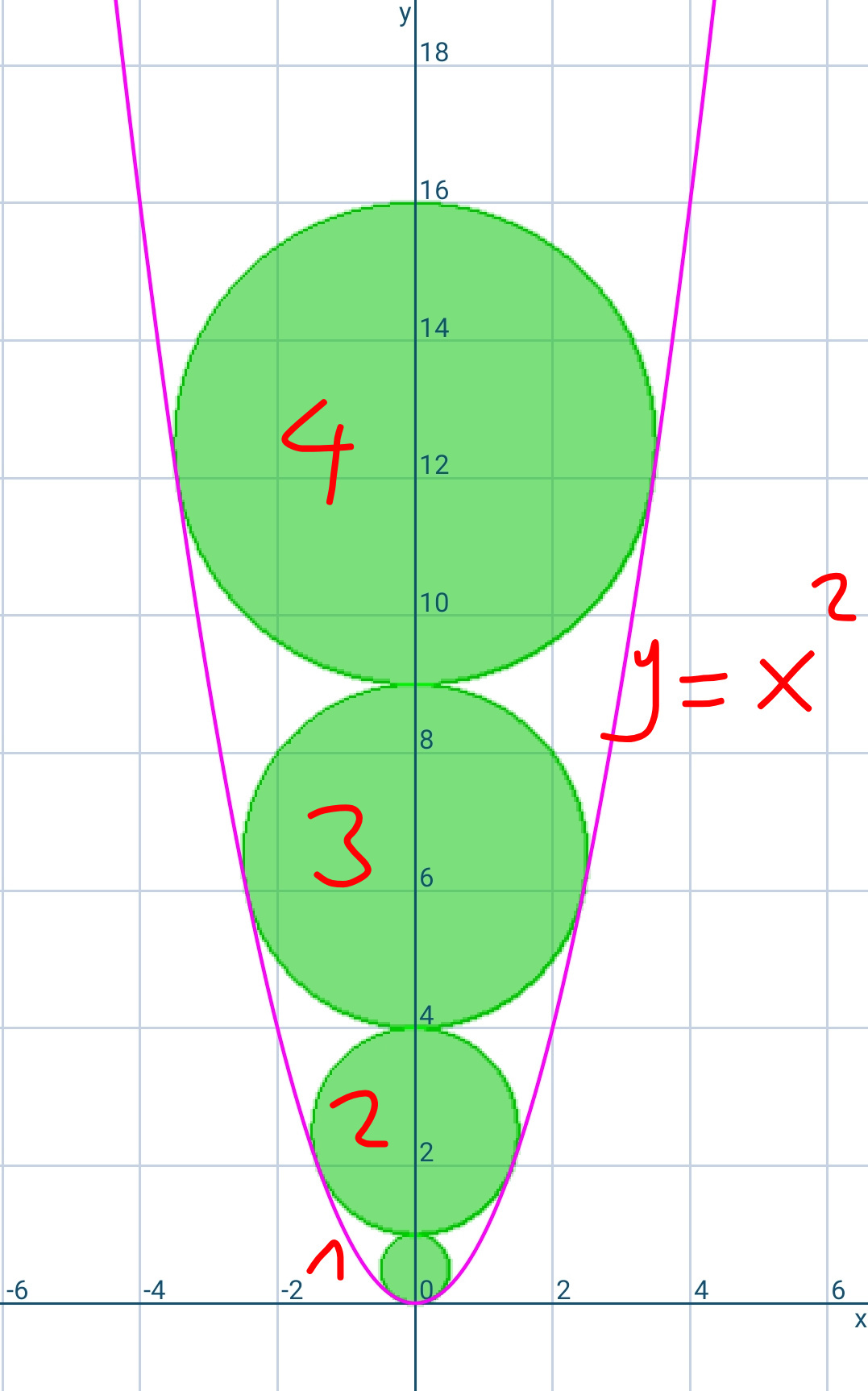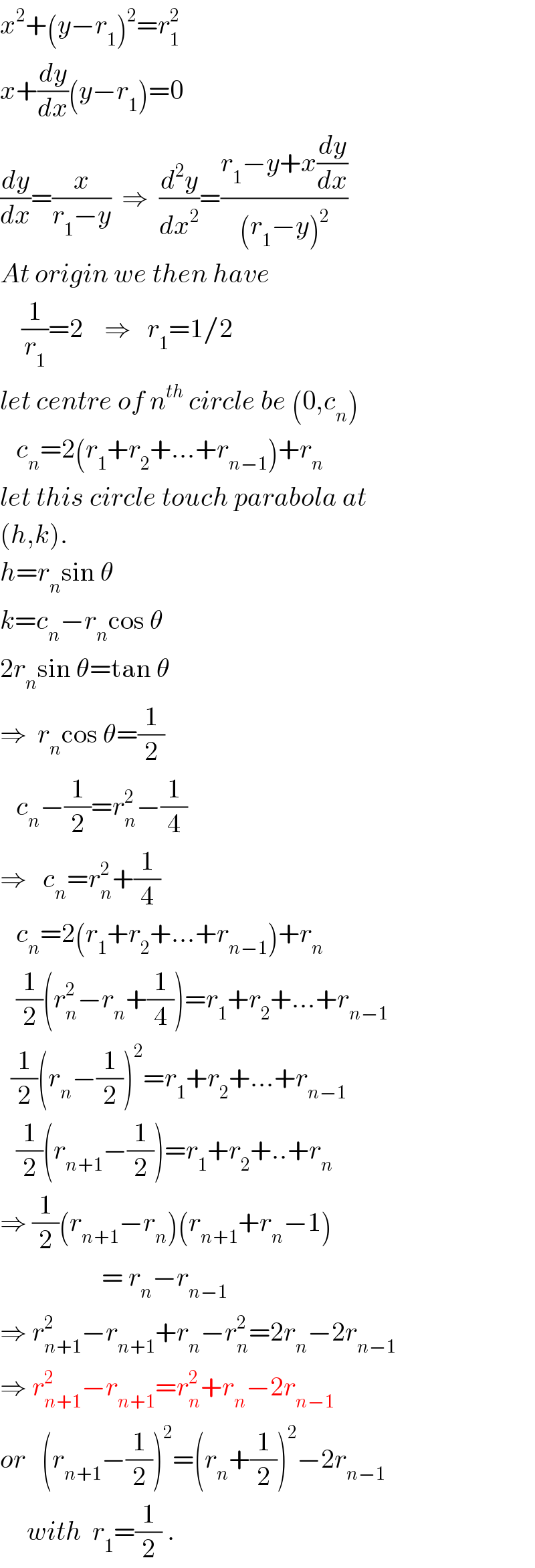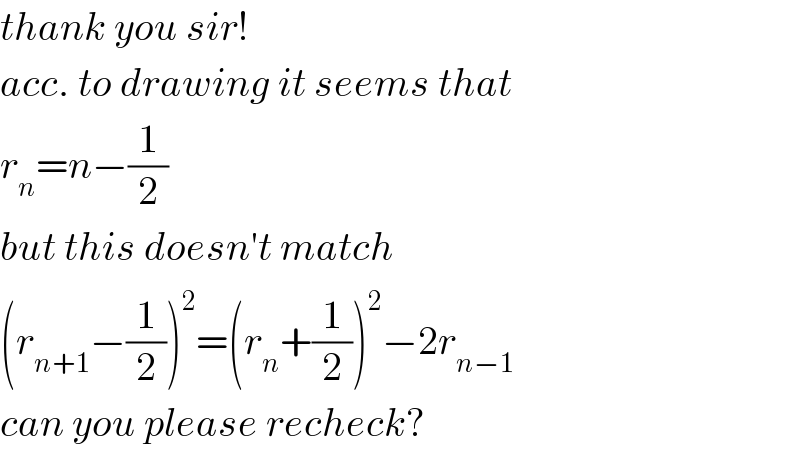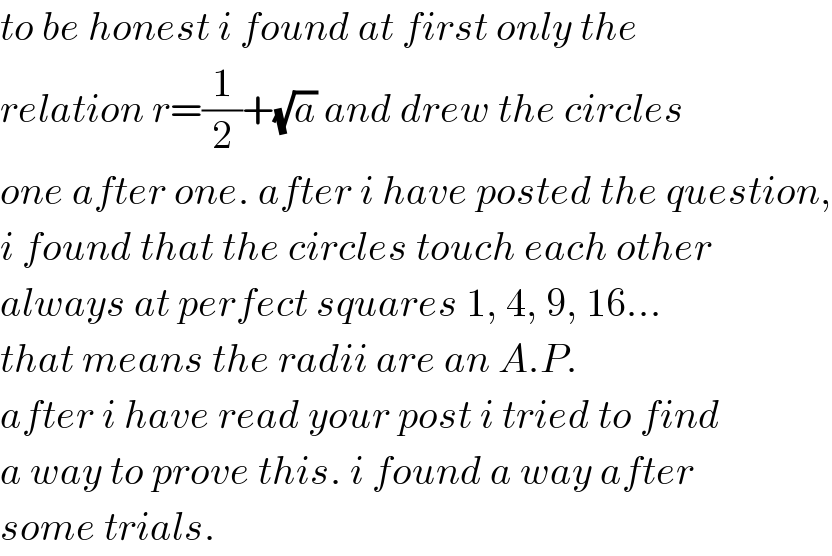
Question and Answers Forum
Question Number 64112 by mr W last updated on 13/Jul/19

Commented by mr W last updated on 13/Jul/19

Answered by ajfour last updated on 13/Jul/19

Commented by mr W last updated on 13/Jul/19

Answered by mr W last updated on 13/Jul/19
![first circle touches the parabola at (0,0) y′=2x y′′=2 ⇒R=(1/2) ⇒radius of the first circle r_1 =(1/2) let r_n =radius of nth circle d_n =diameter of nth circle, d_n =2r_n the nth circle touches the n−1th circle at (0,d_1 +d_2 +...d_(n−1) ) let a_n =d_1 +d_2 +...d_(n−1) =2(r_1 +r_2 +...+r_(n−1) ) eqn. of nth circle: x^2 +(y−a_n −r_n )^2 =r_n ^2 intersection with parabola y=x^2 : y+(y−a_n −r_n )^2 =r_n ^2 ⇒y^2 −[2(a_n +r_n )−1]y+a_n (a_n +2r_n )=0 due to tangency: Δ=[2(a_n +r_n )−1]^2 −4a_n (a_n +2r_n )=0 4(a_n ^2 +2a_n r_n +r_n ^2 )−4(a_n +r_n )+1−4a_n ^2 −8a_n r_n =0 r_n ^2 −r_n −(a_n −(1/4))=0 ⇒r_n =(1/2)+(√a_n ) ⇒r_n =(1/2)+(√(2(r_1 +r_2 +...+r_(n−1) ))) (r_n −(1/2))^2 =2(r_1 +r_2 +...+r_(n−1) ) ⇒r_n ^2 −r_n +(1/4)=2(r_1 +r_2 +...+r_(n−1) ) ...(i) ⇒r_(n−1) ^2 −r_(n−1) +(1/4)=2(r_1 +r_2 +...+r_(n−2) ) ⇒r_(n−1) ^2 +r_(n−1) +(1/4)=2(r_1 +r_2 +...+r_(n−1) ) ...(ii) (i)−(ii): (r_n +r_(n−1) )(r_n −r_(n−1) −1)=0 ⇒r_n −r_(n−1) −1=0 ⇒r_n −r_(n−1) =1 ⇒r_1 ,r_2 ,r_3 ,..,r_n are A.P. with common difference 1, since r_1 =(1/2), ⇒r_n =(1/2)+(n−1)×1=n−(1/2)](Q64117.png)
Commented by ajfour last updated on 13/Jul/19

Commented by mr W last updated on 13/Jul/19

Commented by Tawa11 last updated on 04/Jan/22

